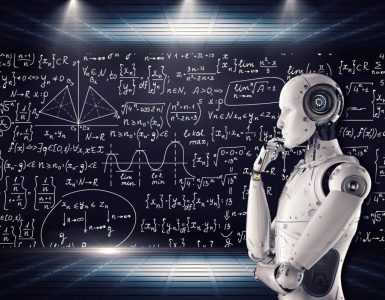Natural Language Processing (NLP) is a critical domain of artificial intelligence (AI) that enables machines to understand, interpret, and respond to human language. Whether in textual or spoken form, NLP processes natural language in a way that is both meaningful and useful. By blending linguistics, data science, and computer science, NLP systems can derive actionable insights from unstructured data, making it an essential component of modern technology.
For instance, when you ask Alexa to play a song, the NLP engine behind the system deciphers your intent, identifies the keywords, and executes the appropriate action. Similarly, when you use Google Translate, NLP algorithms translate text into other languages while retaining context and meaning.
NLP is a cornerstone of many AI applications, such as chatbots, search engines, spam filters, and sentiment analysis tools. Its applications have grown immensely, from helping businesses automate customer interactions to enabling healthcare systems to analyze patient records. The evolution of NLP has seen a shift from rule-based systems to advanced machine learning and deep learning techniques, making systems more accurate and versatile.
This blog explores the fundamentals of NLP, its significance, components, techniques, applications, and future trends, providing code snippets for practical understanding.
Understanding Natural Language Processing (NLP)
Natural Language Processing is the art and science of enabling computers to communicate with humans in natural language. Unlike traditional programming languages, natural languages are inherently ambiguous and context-dependent, which makes NLP a challenging but fascinating field.
The process of NLP involves breaking down text into smaller units, analyzing grammar and syntax, and mapping the semantics of language. One of its primary goals is to make computers understand language as humans do, enabling machines to infer meaning, respond appropriately, and even predict user needs. For example, predictive text in smartphones uses NLP to suggest the next word while typing, based on context.
NLP encompasses two main subfields:
- Natural Language Understanding (NLU): Deals with comprehension, such as sentiment analysis or parsing.
- Natural Language Generation (NLG): Focuses on creating coherent responses, such as automated text summarization.
NLP draws upon linguistic theories such as morphology (word formation), syntax (sentence structure), and semantics (meaning). Additionally, it integrates statistical methods and machine learning models to handle language ambiguities.
Today, NLP forms the backbone of systems like speech-to-text transcription, machine translation, and voice-based assistants, simplifying human-computer interaction on a global scale.
The Importance of NLP in Modern Technology
In an era of information overload, NLP plays a pivotal role in extracting valuable insights from unstructured data. With nearly 80% of global data being unstructured—such as emails, social media posts, and online reviews—NLP transforms these inputs into structured information that businesses, researchers, and developers can use.
One major contribution of NLP is its ability to enhance user experience. Virtual assistants like Google Assistant and Siri utilize NLP to process voice commands, enabling hands-free navigation and personalized recommendations. Similarly, e-commerce platforms like Amazon and eBay deploy NLP-based recommendation engines to suggest products aligned with user preferences.
In the corporate world, text mining using NLP helps businesses analyze customer feedback, monitor social media trends, and optimize marketing strategies. In healthcare, NLP applications assist in analyzing patient records, summarizing medical documents, and aiding in diagnostics.
NLP’s ability to work with diverse languages, slang, and context makes it indispensable. For instance, while traditional systems might falter with ambiguous statements like “I bank on him,” NLP systems discern whether “bank” refers to trust or a financial institution, depending on the context.
The importance of NLP continues to grow with advancements in AI, contributing to innovation across domains like cybersecurity, education, and human resources.
Key Components of NLP Systems
To function effectively, NLP systems rely on several interconnected components, each addressing a specific aspect of natural language processing:
- Tokenization: This divides the input text into meaningful units, such as words or sentences. Tokenization is the first step in analyzing text for further processing.
Example:
python
from nltk.tokenize import word_tokenize text = "NLP is transforming the world!" tokens = word_tokenize(text) print(tokens) # Output: ['NLP', 'is', 'transforming', 'the', 'world', '!']
2. Lemmatization and Stemming: These techniques reduce words to their root forms. For example, “running,” “ran,” and “runs” would be converted to “run.” While stemming uses basic rules, lemmatization considers the context.
Example:
python
from nltk.stem import WordNetLemmatizer lemmatizer = WordNetLemmatizer() print(lemmatizer.lemmatize("running", pos="v")) # Output: 'run'
3. Part-of-Speech (POS) Tagging: This assigns grammatical roles (e.g., nouns, verbs, adjectives) to each word in a sentence. POS tagging is critical for understanding sentence structure.
Example:
python
import nltk nltk.download('averaged_perceptron_tagger') text = "NLP enhances machine learning." tokens = nltk.word_tokenize(text) pos_tags = nltk.pos_tag(tokens) print(pos_tags) # Output: [('NLP', 'NNP'), ('enhances', 'VBZ'), ('machine', 'NN'), ('learning', 'NN')]
4. Named Entity Recognition (NER): This identifies specific entities like names, dates, or locations in text, helping extract structured information.
Example:
python
import spacy # Load spaCy's pre-trained model nlp = spacy.load("en_core_web_sm") # Sample text for NER text = """ Apple is planning to open a new store in San Francisco on January 15, 2025. Tim Cook, the CEO of Apple, announced the news during the company's conference. """ # Process the text using spaCy doc = nlp(text) # Iterate through the named entities in the text for entity in doc.ents: print(f"Text: {entity.text}, Label: {entity.label_}")
5. Dependency Parsing: This analyzes grammatical dependencies within a sentence to identify relationships between words. For example, in “The dog chased the cat,” dependency parsing identifies “dog” as the subject and “chased” as the verb.
Example Code:
python
import spacy # Load spaCy's pre-trained model nlp = spacy.load("en_core_web_sm") # Sample sentence for Dependency Parsing sentence = "The quick brown fox jumps over the lazy dog." # Process the sentence using spaCy doc = nlp(sentence) # Iterate through each token in the sentence and print its dependency relation for token in doc: print(f"Word: {token.text}, Dependency: {token.dep_}, Head: {token.head.text}") Example: Tokenization and POS Tagging python import nltk from nltk.tokenize import word_tokenize from nltk import pos_tag text = "Natural Language Processing is exciting." tokens = word_tokenize(text) tags = pos_tag(tokens) print(tags) # Output: [('Natural', 'JJ'), ('Language', 'NN'), ('Processing', 'NN'), ('is', 'VBZ'), ('exciting', 'JJ'), ('.', '.')]
These components form the backbone of tasks such as sentiment analysis, summarization, and question-answering systems.
Types of NLP Techniques
Natural Language Processing techniques can be categorized based on their approaches and underlying methodologies. These techniques enable systems to handle various complexities of language, such as ambiguity, context, and variability. The major types include:
Rule-Based NLP Approaches
Rule-based methods rely on predefined linguistic rules and patterns. These systems use manually created grammars, dictionaries, and templates to process text. For instance, early spam filters detected unwanted emails by searching for specific words like “free” or “win.”
While rule-based systems are easy to understand and implement, they struggle with scalability and adapting to new languages or contexts.
Statistical and Machine Learning Methods
Statistical approaches use probability models to learn patterns from data. Machine learning methods further extend this by training models on labeled datasets to predict or classify text. For example, spam filters now use ML algorithms to detect patterns in large datasets of emails.
Deep Learning in NLP
Deep learning techniques, such as recurrent neural networks (RNNs) and transformers, revolutionize NLP by modeling complex relationships in language. Unlike traditional ML, deep learning doesn’t rely heavily on feature engineering, instead extracting features automatically. GPT and BERT models are prime examples of this evolution.
Hybrid NLP Models
These combine rule-based systems with machine learning or deep learning to leverage the advantages of both. Hybrid approaches are often used in real-world applications where interpretability and accuracy are equally important.
Core Applications of NLP in Various Industries
The versatility of NLP has made it a cornerstone of many industries. Below are key applications that highlight its widespread use:
NLP in Business Intelligence and Analytics
In business, NLP tools analyze customer feedback, identify trends, and predict future market behaviors. For example, sentiment analysis tools monitor social media to gauge public opinion about brands or products.
Healthcare and Clinical NLP
In healthcare, NLP systems extract insights from clinical notes and patient records, aiding in diagnostics and treatment planning. Tools like IBM Watson use NLP to process large volumes of medical data, providing accurate diagnoses and personalized treatment options.
NLP for Customer Service and Chatbots
Chatbots powered by NLP, like those on websites or messaging platforms, provide 24/7 support. By understanding user queries in real-time, they enhance customer service and reduce operational costs.
Language Translation and Localization
Translation services such as Google Translate utilize NLP models to convert text from one language to another, ensuring the retention of meaning and context. Localization adds a layer of cultural adaptation to translations, making content regionally relevant.
Sentiment Analysis and Social Media Monitoring
NLP systems evaluate customer sentiment by analyzing social media posts, product reviews, and surveys. Businesses use this to understand public sentiment, improve products, and tailor marketing campaigns.
NLP in Artificial Intelligence
NLP and AI are intrinsically linked, with NLP being a crucial subfield of AI. Here’s how NLP contributes to AI development:
The Role of NLP in AI Development
NLP systems give AI the ability to understand and generate human language, enabling seamless communication. Tasks like speech recognition, language modeling, and dialogue generation are AI-driven thanks to NLP advancements.
Integration of NLP with Other AI Technologies
NLP integrates seamlessly with technologies such as computer vision and robotics. For instance, autonomous systems use NLP for voice commands while relying on computer vision for navigation.
Challenges in Implementing NLP in AI Systems
Challenges in implementing NLP for AI include handling diverse languages, understanding idiomatic expressions, and managing ambiguity. Additionally, ethical concerns like bias in AI models further complicate deployment.
Future Trends in NLP-Powered AI
Future developments in NLP include zero-shot learning, where systems perform tasks without prior training, and real-time NLP models that provide instantaneous responses. These advancements will further bridge the gap between human and machine interaction.
Implementing NLP: Tools and Best Practices
Popular NLP Libraries and Frameworks
There are numerous NLP libraries available for developers to implement NLP models effectively:
- NLTK (Natural Language Toolkit): Ideal for beginners, offering tokenization, stemming, and POS tagging tools.
- spaCy: A high-performance library for industrial use, offering pre-trained pipelines for named entity recognition (NER) and dependency parsing.
- Transformers by Hugging Face: Provides state-of-the-art models like BERT, GPT, and T5 for tasks like summarization, text classification, and translation.
Data Preprocessing for NLP Tasks
Data preprocessing is crucial for training accurate NLP models. Key steps include:
- Text Cleaning: Removing unnecessary symbols, punctuation, and stopwords to reduce noise in data.
- Tokenization: Breaking text into meaningful units.
- Vectorization: Converting text into numerical representations using methods like TF-IDF or word embeddings (e.g., Word2Vec, GloVe).
Example of Tokenization:
python
from nltk.tokenize import word_tokenize text = "NLP models require clean data for optimal performance." tokens = word_tokenize(text) print(tokens) # Output: ['NLP', 'models', 'require', 'clean', 'data', 'for', 'optimal', 'performance', '.']
Evaluation Metrics for NLP Models
To evaluate NLP models effectively, developers use metrics such as:
- Precision and Recall: To measure the relevance of predictions.
- F1 Score: A balance between precision and recall.
- BLEU Score: Used in translation tasks to measure similarity to a reference translation.
Ethical Considerations in NLP Development
When developing NLP systems, ethical concerns like bias, fairness, and data privacy must be addressed. For instance, systems trained on biased datasets can produce prejudiced outputs, affecting users negatively. Developers should employ diverse datasets and rigorous testing protocols to mitigate these issues.
Conclusion
Natural Language Processing (NLP) is at the forefront of AI innovation, bridging the gap between human communication and machine understanding. Its applications span across industries, enhancing customer experience, optimizing healthcare operations, and driving business intelligence.
As NLP continues to evolve with advances in deep learning and hybrid models, its capabilities will expand to include more nuanced and context-aware systems. Future trends like real-time NLP and unsupervised learning models will unlock unprecedented potential in areas like real-time translation and virtual assistants.
However, challenges remain, particularly regarding ethical concerns and data diversity. Addressing these issues will ensure that NLP systems are not only efficient but also fair and unbiased.
For developers, mastering NLP tools like spaCy, NLTK, and Hugging Face’s Transformers will be pivotal in creating cutting-edge applications. By leveraging best practices and focusing on scalability, NLP practitioners can unlock the transformative potential of this technology.
NLP is no longer just a technological domain—it’s an integral part of how humans and machines interact, setting the stage for a future where communication barriers are virtually non-existent.





Add comment